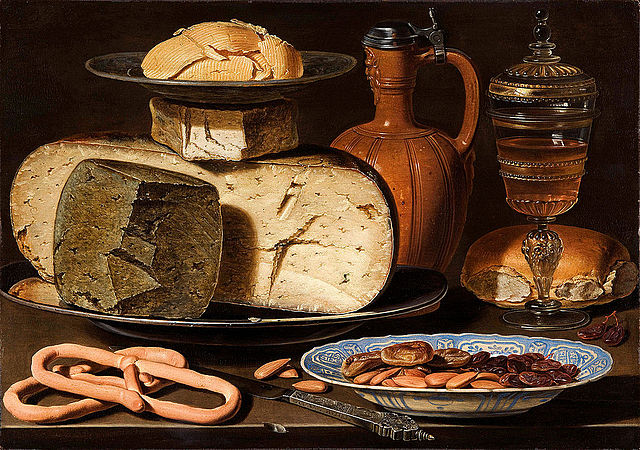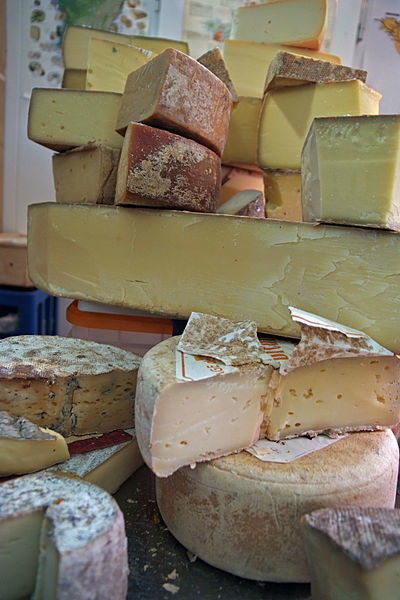Swiss cheeses and dairy products
Switzerland has a strong and ancestral dairy farming and cheesemaking tradition. The breeding of cattle, sheep and goats for milk is attested in the Neolithic period and, since Antiquity, cheese has been exported from the Alpine regions. The rugged nature of the country makes approximately 80% of the agricultural land unsuitable for cultivation, which is therefore mainly exploited for cattle and sheep farming. This mode of exploitation has forged a large part of the Swiss landscape, in the Alps, the Jura and on the Swiss Plateau.
An armailli transporting a wheel of cheese from the alp.
Landscape of Gruyère
Dairy cows in the Emmental
A Valais Blackneck in the high Alps
Cheese is a dairy product produced in a range of flavors, textures, and forms by coagulation of the milk protein casein. It comprises proteins and fat from milk. During production, milk is usually acidified and either the enzymes of rennet or bacterial enzymes with similar activity are added to cause the casein to coagulate. The solid curds are then separated from the liquid whey and pressed into finished cheese. Some cheeses have aromatic molds on the rind, the outer layer, or throughout.
A platter with cheese and garnishes
Cheeses in art: Still Life with Cheeses, Almonds and Pretzels, Clara Peeters, c. 1615
Hard cheeses in Germany
A piece of soft curd cheese, oven-baked to increase shelf life








